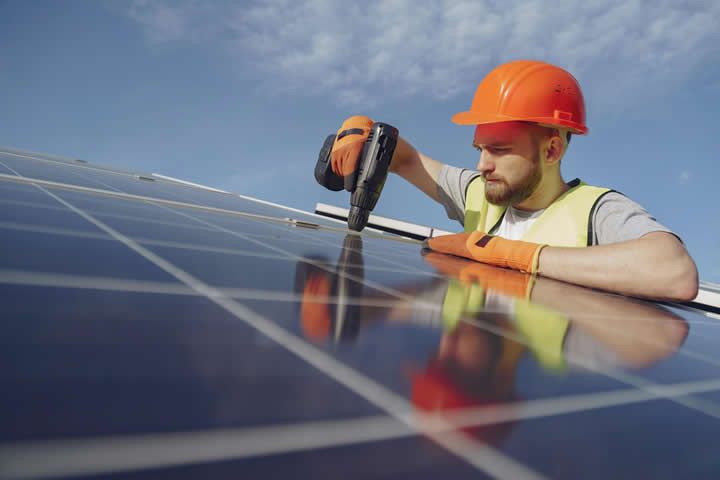The final component to ensure effective solar optimisation is the energy industry itself. Whilst government incentives are welcome, it is also important that suppliers reward customers who embark upon a journey towards a renewable future.
 Optimizing solar is a win, win
Optimizing solar is a win, win

Daniel Cross, Senor Director of Load Forecasting | POWWR
A recent study found that the sunniest place on earth is on a large plain near the Andes Mountains in Chile. There, the plateau can see as much sun as Venus. At around 308 watts per square meter on average the solar irradiance on the plateau is roughly twice as much as that on the U.S. East Coast. However, whether someone lives in Chile or Connecticut, they are likely increasingly looking to the skies as a source of power as traditional fossil fuels continue to be phased out.
A trend that is not going away
Approximately 6% of single-family owner-occupied homes in the United States now have solar panels installed. It is a figure that is steadily increasing. It is partly due to advancements in solar technology and partly due to supportive government policies like the 30% federal tax credit for solar installations. It is a trend that is not going to do away. Research suggests that the number of homes with solar panels will more than triple by 2030. More in locations with abundant sunlight and supportive regulatory environments.
The growth in solar panel ownership in has also been buoyed by the decreasing costs of solar installations, a multitude of government led incentives, and increasing awareness of the environmental and economic benefits of solar energy. Plus, there has been the advancements in battery technology.
Improving battery technology
Battery technology has improved rapidly. This is down to advancements in materials science, manufacturing processes, and the growing demand for efficient energy storage solutions. Its importance to the optimisation of solar cannot be underestimated.
One of the key areas where battery technology has evolved is in energy density. Modern lithium-ion batteries have far better energy density than in the past. Then there is the emergence of solid-state batteries that use a solid electrolyte instead of a liquid one.
Another key area of improvement to batteries has been in charging speed. Innovations in battery chemistry and thermal management enable much faster charging times. In fact, some new technologies allow batteries to reach 80% charge in as little as 15 minutes.
In addition, modern solar batteries have a longer lifespan, are more resistant, are safer, and often have in-built smart battery management systems (BMS) that can monitor battery health, optimise charging and discharging cycles, and predict potential failures.
Grid stabilization
Enhancements in battery technology is timely. Increasingly volatile extreme weather patterns, data centers required to power the new era of artificial intelligence, population increases in urban areas, and the popularity of electric vehicles are all putting more load on the power grid than ever before.
Advancements in battery technology have paved the way for batteries to play a crucial role in grid stabilization. Not only are enhanced battery technologies being integrated into the grid to store energy from renewable sources but it has made it easier for end users to push excess energy back to the grid.
Keep it clean
Whether someone gets 12 hours of sunlight a day or 12 minutes, maximising the efficiency and effectiveness of the solar energy system is imperative. The first key aspect is to ensure that the angle and direction of solar panels are adjusted to capture the most sunlight. Typically, panels are oriented towards the equator and tilted at an angle that maximises exposure to the sun. However, using tracking systems so that the panels can follow the sun's path from east to west during the day can make them even more effective. Also, make sure that any solar panels are placed where they will not be shaded by trees, buildings, or other obstructions throughout the day.
Using advanced photovoltaic technology to increase the conversion rate of sunlight to electricity can also help. As can regular cleaning of the panels to remove dirt and debris.
How technology can help
There are also now several ways that technology can help optimise solar energy systems. Software and Internet of Things (IoT) devices can be used to monitor and track the performance of solar systems in real time. In addition, artificial intelligence (AI) and machine learning (ML) can be used to analyse huge data sets on weather conditions and average cloud coverage to ensure that an end user gets the most out of their system. Also, data analytics can be used to predict and prevent potential issues before they impact system performance.
Then there is the aforementioned BMS’ that can store excess energy generated during peak sunlight hours so it can be used during cloudy periods or at night. Or devices that convert DC electricity from solar panels to AC electricity, optimising energy flow and storage.
A win, win
The final component to ensure effective solar optimisation is the energy industry itself. Whilst government incentives are welcome, it is also important that suppliers reward customers who embark upon a journey towards a renewable future. Energy suppliers need to do all they can to encourage end users to use their batteries effectively so that any excess energy produced can find its way back to the grid.
After all, it is a win, win. In addition to the obvious environmental benefits, the more end users can help with energy production, the more consistent energy supply will be. This means suppliers – and in turn the end users themselves – will not be as exposed to higher prices.
Solar power is instrumental to building a greener future for us all. Wind is far more volatile. Plus, the setup costs are far higher. Thankfully, the advancements of solar panel and battery technology, has massively enhanced the overall efficiency, reliability, and cost-effectiveness of solar energy systems. This has made such systems a much more viable and attractive option for both residential and commercial applications alike.
 Daniel Cross is the Senior Load Forecasting Director for POWWR where he is responsible for creating and maintaining the latest and best artificial intelligence load forecasting algorithms. Daniel came to POWWR from Just Energy where he was the Lead Data Scientist charged with creating a load forecasting system from the ground up to replace Innowatts and bring all of load forecasting in-house. A strong believer in always improving, Daniel brings a passion to load forecasting to foster meaningful improvements through, not only more accurate models, but tools that assist in mitigating risk through probabilistic forecasting, creating reports that allow for maximum inference, and more. Daniel received a B.S. degree in Comprehensive Mathematics from the University of Arizona, and M.S. and Ph.D. degrees in Statistics from Rice University.
Daniel Cross is the Senior Load Forecasting Director for POWWR where he is responsible for creating and maintaining the latest and best artificial intelligence load forecasting algorithms. Daniel came to POWWR from Just Energy where he was the Lead Data Scientist charged with creating a load forecasting system from the ground up to replace Innowatts and bring all of load forecasting in-house. A strong believer in always improving, Daniel brings a passion to load forecasting to foster meaningful improvements through, not only more accurate models, but tools that assist in mitigating risk through probabilistic forecasting, creating reports that allow for maximum inference, and more. Daniel received a B.S. degree in Comprehensive Mathematics from the University of Arizona, and M.S. and Ph.D. degrees in Statistics from Rice University.
The content & opinions in this article are the author’s and do not necessarily represent the views of AltEnergyMag
Comments (0)
This post does not have any comments. Be the first to leave a comment below.
Featured Product

